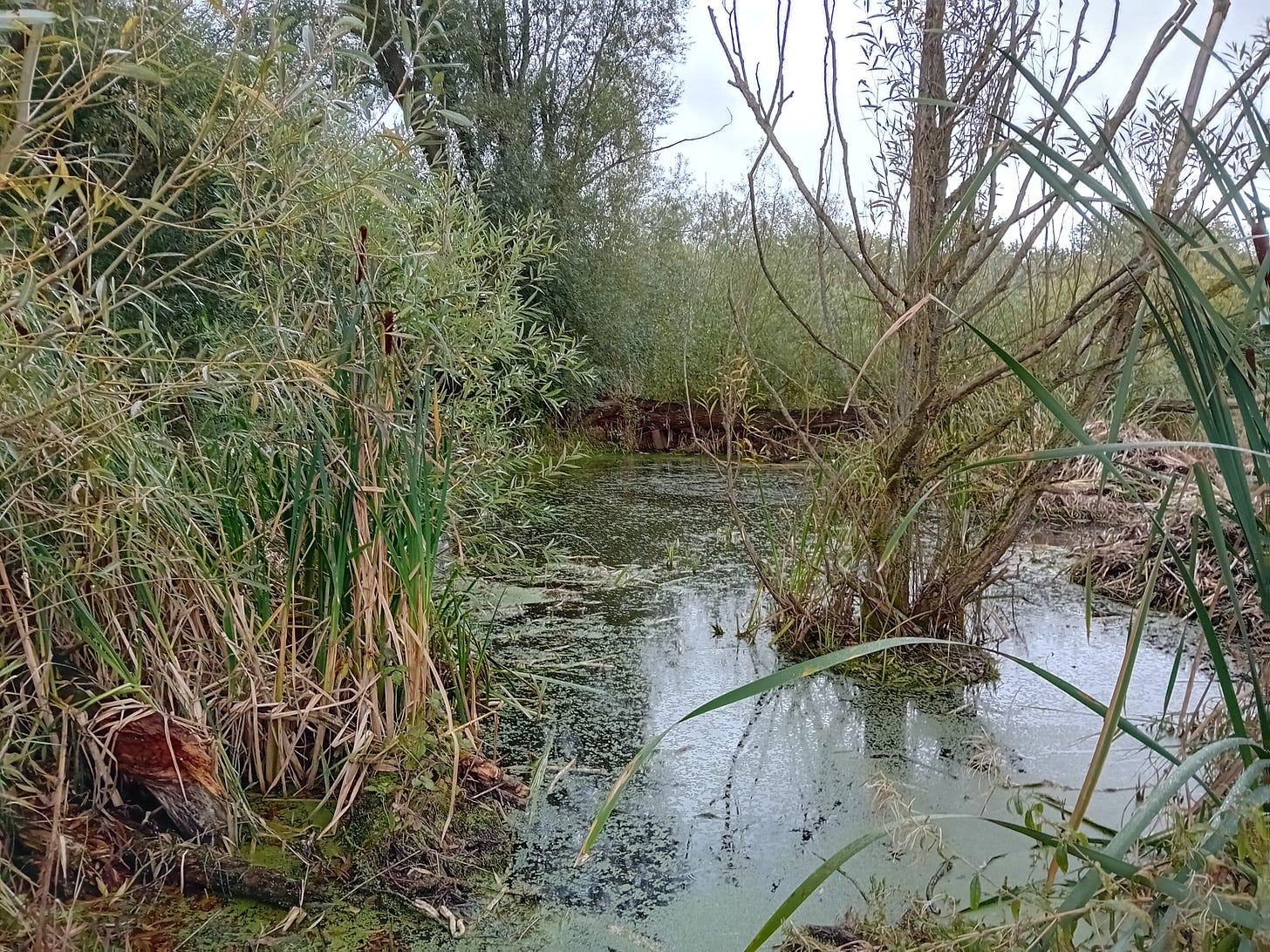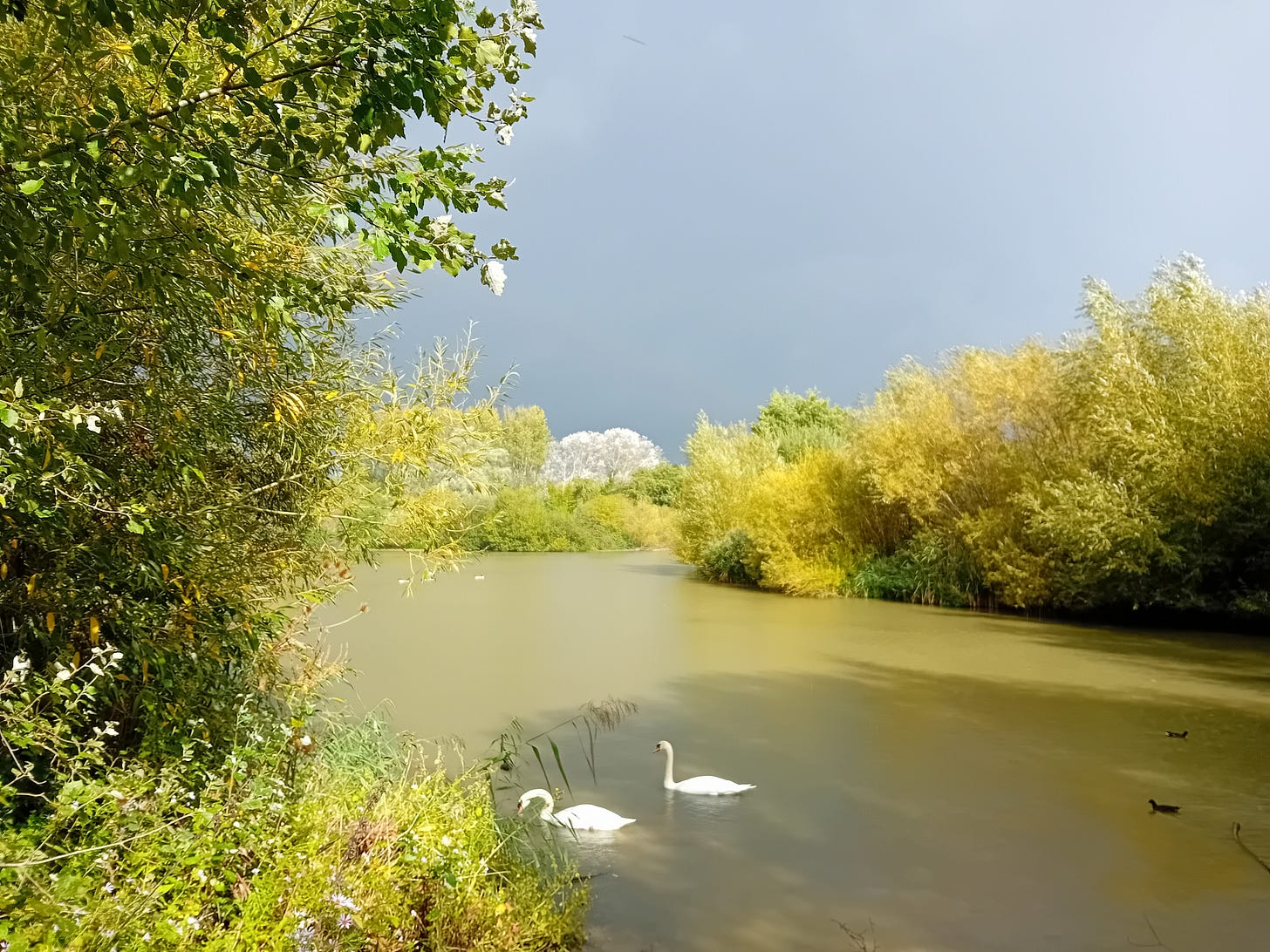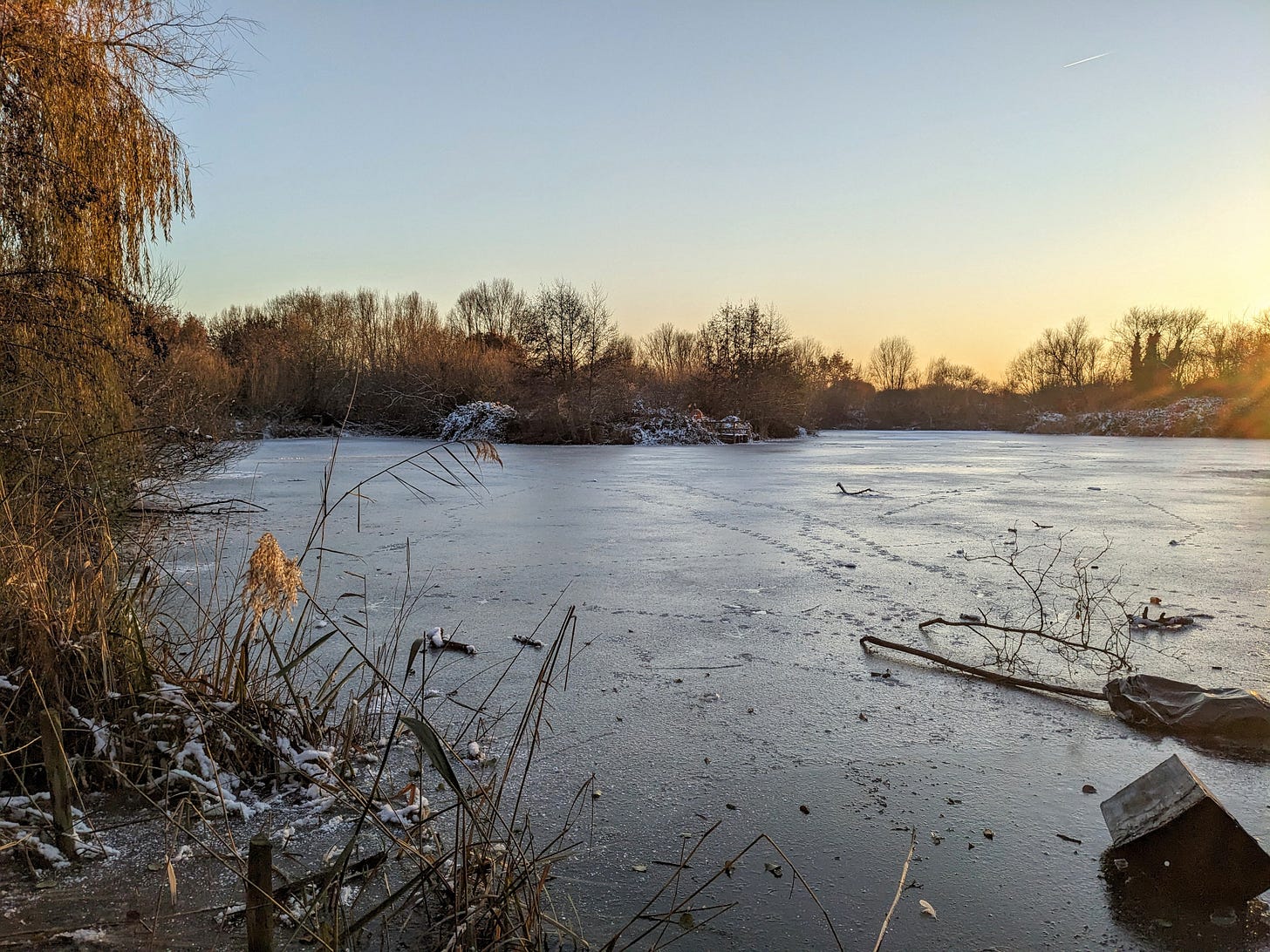South Norwood Country Park is a very watery area. In addition, to the lake which was dug before the area became a country park, there are a number of ponds, small seasonal pools, streams and wetlands. All of this water attracts lots of wading birds, waterfowl and other wildlife and a lot of our volunteering here is focused on maintaining a range of habitats for the different species that have found a home in the Country Park.
Our most recent task involved removing reeds, water mint and other plants from parts of the wetland area in create a patchwork of open areas and pockets of vegetation. The wetlands were not too wet luckily – it was a day for wellies rather than waders – but it was mucky work nonetheless. The roots of everything we pulled up were covered in damp, sticky mud and as we removed more vegetation, the ground became damper and stickier, and it became more difficult to move around.
When a couple of the other volunteers asked if I’d like to help them survey the pond next to the wetlands, I was glad of an excuse to get away from the muck for a while. This particular pond is relatively new, having been dug out by volunteers only a few years ago, but it already looks very much part of the landscape.
Ponds are defined as bodies of water between 1 square metre and 2 hectares in size (equivalent to about 2.5 football pitches) which hold water for at least four months of the year. They might be relatively small but collectively they are hugely important for wildlife, providing homes for two-thirds of freshwater species, such as frogs, toads, newts, dragonflies and more. Ponds occur naturally in areas where there is lots of water, such as fens and wet woodland but many were also created by humans to provide a source of fresh water wherever it was needed. Ponds were dug alongside drovers’ routes to provide water for cattle and sheep as they were taken to market, and nearly every village green would also have contained a pond so they would once have been a common sight across the country.
Sadly, like so many other habitats, ponds suffered as the countryside changed and agriculture intensified. The Freshwater Habitats Trust estimates that half of UK ponds were lost during the twentieth century and 80% of the remaining ponds are in poor condition. However, the Trust also believes that some ponds are of such importance that they should be identified as priority habitats. These priority ponds (officially known as “Habitats of Principle Importance”) were granted statutory protection under the Natural Environment and Rural Communities (NERC) Act 2006.
Having secured the supporting legislation, the focus is now on identifying as many priority ponds as possible, as the Trust believes that one only about 2% of the UK’s priority ponds have been recorded so far. So they have developed the Priority Pond Assessment Survey (PASS) methodology to allow volunteers to identify whether a particular pond is likely to qualify as a priority habitat and this is what we were using for our survey at South Norwood Country Park.
The idea is that focusing on physical characteristics makes it easier for those without specialist ecological skills to undertake the assessment. The system asks for estimates of various details about the pond and the area around it, such as the extent to which the pond is overhung by trees and shrubs and how much of it is covered by wetland vegetation. Some of these were very easy to complete for our pond. The score for grazing intensity was obvious as there aren’t any grazing animals in the Country Park. But others took more time, particularly when it came to estimating the percentage of different land use types (woodland, grassland, arable etc) within 100m of the pond. After spending some time peering at images on Google Earth and looking at what was around us we eventually came to a decision about what to include.
When we’d finally completed all the relevant details, including the pond’s location, we submitted the data via a form on FHT’s website and then had to wait a couple of minutes for the results. We didn’t have high expectations as an assessment of the Ditches Lane Pond at Happy Valley the week before had given a negative result. But much to our surprise, and delight, a little message popped up saying “Congratulations! Your pond is a priority pond.” This is great news as priority status should help protect the pond and provide increased opportunities to attract funding to improve and care for it.
The data we collected will be added to the Priority Ponds database. As the PASS system is based purely on physical characteristics, further biological surveys are needed to identify whether the pond at South Norwood Country Park really is a priority habitat but it’s now clear those surveys are worth doing, and there’s a high chance it is a priority as the PASS system errs on the side of caution. To avoid false positives, the algorithm misses around 42% of water bodies that would be identified as priority ponds using biological methods which means that the negative result for the Ditches Lane Pond doesn’t necessarily mean it is not a priority pond. But biological surveys require specialist skills and knowledge and the great thing about the PASS system is that anyone with a bit of time and an interest in wildlife can help to record and identify these important water bodies. It’s another great example of the valuable role of citizen scientists.
To finish….
…a few things I’d like to share:
Priority ponds: The Freshwater Habitats Trust has loads of great information about ponds and other watery habitats on its website, including details about the Priority Pond Assessment (PASS) Survey. If you want to help identify a priority pond, you’ll have to wait until next June now as the PASS survey season finishes in early October but there’s also an opportunity to contribute to their urban pond count.
The Conservation Volunteers (TCV) Croydon Pond Project: Between 2018 and 2020, volunteers, ecologists and local historians undertook a detailed assessment of the history, ecology and legacy of Croydon’s ponds, including ecological surveys of 42 public ponds across the borough. Comparing the results of these surveys with ones undertaken in 1994 showed that the management work undertaken by TCV and other community groups in the intervening years had resulted in an increase in the number of species in the ponds. The booklet produced for the project includes some fascinating information about the history and ecology of some of Croydon’s ponds.
March for Clean Water: In the run-up to the General Election a few months ago, concerns about the poor condition of most of the UK’s waterways, excessive sewage spills and the water companies’ prioritisation of shareholder profits over the needs of people and wildlife were all huge issues. The new UK Government has already brought forward a Bill aimed at tackling some of these concerns, but we need reforms to happen quickly as well as urgent action to ensure that existing laws are being implemented effectively. That’s why a coalition of NGOs are organising a March for Clean Water on Sunday 3 November. You can find out more and sign up to join the March here.





Nice one Ruth. As you say, a very worthwhile exercise. We also found it very amusing but I can't recall why.